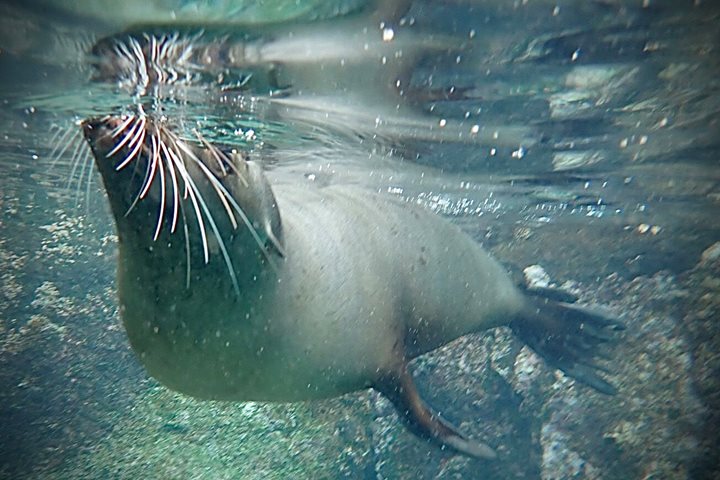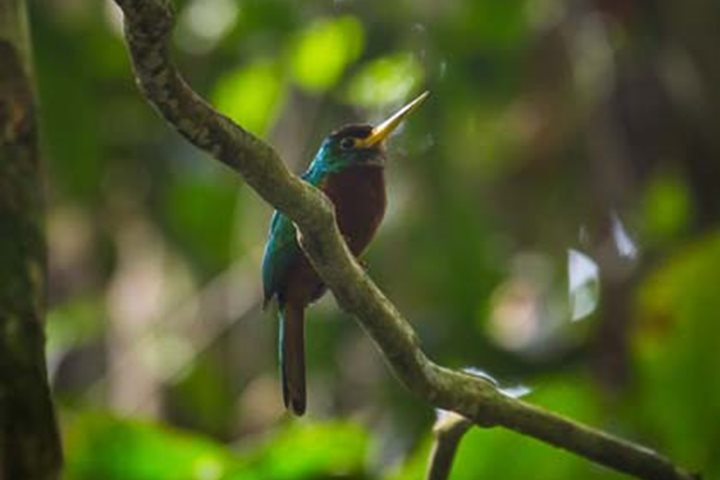National Geographic Islander anchored off the coast of Santiago Island this morning, facing Chinese Hat. It was wonderful to wake up to such a beautiful landscape. Our early morning activity was a Zodiac ride off the coast of the islet. The basaltic rocks on the coast were a perfect place for Galapagos penguins to hang out and dry off. We were lucky to find a penguin taking a break there and our guests were happy as, for many of them, the Galapagos penguin was one of their goals to see here on the islands. Sally Lightfoot crabs were also all around us, shining brightly. We saw a few herons standing still on the rocks waiting for their prey—fish, of course—to come close enough to catch. The candelabra forest in the middle of a barren terrain was outstanding. How such big plants can survive those conditions amazed everyone in my group.
After this great ride, we headed back to the ship to get ready for snorkeling in these clear waters. The water was refreshing, and we saw hundreds of cardinal fish along the rocks. We swam with white-tipped reef sharks, Pacific green sea turtles, and rays. It was a superb time in the calm water surrounded by so much life.
We moved to Sullivan Bay for our afternoon activities, landing on a white sandy beach. Some of our guest decided to go snorkeling again while others stayed at the beach for leisure time. All the guests came out of the water amazed; they had snorkeled with penguins and turtles. From the sand, we saw many blue-footed boobies diving into the water to fish as well as penguins swimming by. We headed back to the ship to reposition and when we landed again, this time it was on a lava field. We strolled through the pahoehoe field, mesmerized by the ropey shapes on the rocks. The contrast between the new black basaltic lava and the brown and red slopes on the field was fascinating. The walk was invigorating, making us feel like we were exploring another world.
We headed back onboard and enjoyed a great sunset, looking forward to the next day’s activities.







